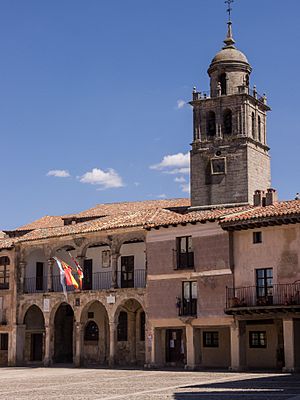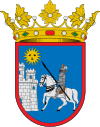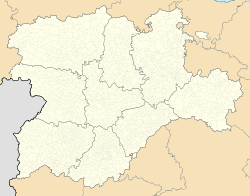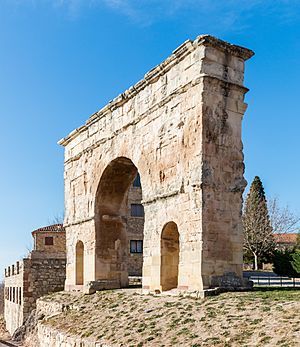Medinaceli facts for kids
Quick facts for kids
Medinaceli
|
|||
|---|---|---|---|

Plaza Mayor, Medinaceli.
|
|||
|
|||

Municipality of Medinaceli
|
|||
| Country | |||
| Autonomous community | |||
| Province | |||
| Comarca | Arcos de Jalón | ||
| Area | |||
| • Total | 205.37 km2 (79.29 sq mi) | ||
| Elevation | 1,092 m (3,583 ft) | ||
| Population
(2018)
|
|||
| • Total | 721 | ||
| • Density | 3.5107/km2 (9.093/sq mi) | ||
| Demonym(s) | Ocelitanos | ||
| Time zone | UTC+1 (CET) | ||
| • Summer (DST) | UTC+2 (CEST) | ||
Medinaceli is a small town and municipality in the province of Soria, located in the Castile and León region of Spain. It is a historic place with a rich past. The municipality also includes other small villages, such as Torralba del Moral.
Contents
Discovering Medinaceli's Name
The name Medinaceli comes from the Arabic words madīnat salīm. This means "city of Salīm". It was named after the Banū Salīm, a family from the Masmuda Berbers.
A Journey Through Medinaceli's History
Medinaceli is located where the Jalón and Arbujuelo rivers meet. Long ago, it was a Celtiberian town called Occilis or Okilis. For many centuries, from the Roman era until 1994, people used its saltworks to get salt for trade.
Exploring Medinaceli's Landmarks
Medinaceli is home to many interesting old buildings and sites. These places tell stories of its long history.
The Famous Roman Arch
Medinaceli has the only Roman arch in Spain with three gates. It was built between the 1st and 3rd centuries AD. This arch is so important that it is used as a symbol for historic sites across Spain. It is a great example of ancient Roman building skills.
Medinaceli Castle and Ducal Palace
The castle of Medinaceli was once the home of the important Dukes of Medinaceli. Later, they moved to the grand Ducal Palace. Both buildings show the power and history of the dukes.
Historic Religious Buildings
- The Colegiata de Nuestra Señora de la Asunción is a large church. Its leaders used to argue with the bishops of Sigüenza to protect the town's rights.
- The Convent of Saint Elizabeth was built in the 16th century. It is still in good condition today and is next to the church of San Martín.
- The beaterio of San Román is now in ruins. It might have been a synagogue a long time ago.
Ancient Moorish Remains
You can still see parts of the old city walls from the Moorish era. One of these is a stone gate. It is one of the few pieces left of the ancient city defenses.
Plaza Mayor: The Heart of Medinaceli
The "Fire Bull" Festival
Medinaceli is known for its traditional festival called "Toro Jubilo" or "Toro de Fuego" (Fire Bull). This festival is a symbolic event. During the festival, a bull has balls of tar placed on its horns, which are then lit. The bull is then released into the town square. This event takes place in November.
Images for kids
See also
 In Spanish: Medinaceli para niños
In Spanish: Medinaceli para niños













